The History Of Volkswagen
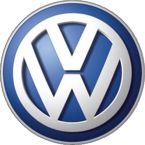
Volkswagen Passenger Cars, also known as VW, is an automobile manufacturer based in Wolfsburg, Germany and is the original as well as the largest brand by sales volume within the Volkswagen Group.
Volkswagen means "people's car" in German, in which it is pronounced [ˈfɔlksˌvaːgən]. Its current tagline or slogan is Das Auto (in English The Car). Its previous German tagline was Aus Liebe zum Automobil, which translates to: Out of Love for the Car, or, For Love of the Automobile, as translated by VW in other languages.
For vehicle timeline tables, see: Volkswagen (timeline)Origins in 1930s Germany
Adolf Hitler had a keen interest in cars even though he did not like to drive. In 1933, shortly after taking over as leader of Germany, he asked Ferdinand Porsche to make changes to his original 1931 design to make it more suited for the working man. Hans Ledwinka discussed his ideas with Ferdinand Porsche, who used many Tatra design features in the 1938 "KdF-Wagen", later known as the VW Käfer—or Volkswagen Beetle. On 22 June 1934, Dr. Ferdinand Porsche agreed to create the "People's Car" for Hitler.
Changes included better fuel efficiency, reliability, ease-of-use, and economically efficient repairs and parts. The intention was that ordinary Germans would buy the car by means of a savings scheme ("Fünf Mark die Woche musst Du sparen, willst Du im eigenen Wagen fahren" — "Save five Marks a week, if you want to drive your own car"), which around 336,000 people eventually paid into. Volkswagen honoured its savings agreements in West Germany (but not in East Germany) after World War II[citation needed]. Prototypes of the car called the "KdF-Wagen" (German: Kraft durch Freude — "strength through joy"), appeared from 1936 onwards (the first cars had been produced in Stuttgart). The car already had its distinctive round shape and air-cooled, flat-four, rear-mounted engine. The VW car was just one of many KdF programmes which included things such as tours and outings. The prefix "Volks" ("People's") was not just applied to cars, but also to other products in Nazi Germany; the "Volksempfänger" radio receiver for instance. On 28 May 1937, the Gesellschaft zur Vorbereitung des Deutschen Volkswagens mbH was established by the Deutsche Arbeitsfront. It was later renamed "Volkswagenwerk GmbH" on 16 September 1938.
Erwin Komenda, the longstanding Auto Union chief designer, developed the car body of the prototype, which was recognizably the Beetle we know today. It was one of the first to be evolved with the aid of a wind tunnel; unlike the Chrysler Airflow, it would be a success.
The building of the new factory started 26 May 1938 in the new town of KdF-Stadt, now called Wolfsburg, which had been purposely built for the factory workers. This factory only produced a handful of cars by the time war started in 1939. None was actually delivered to any holder of the completed saving stamp books, though one Type 1 Cabriolet was presented to Hitler on 20 April 1938 (his 49th birthday).
War meant production changed to military vehicles, the Type 81 Kübelwagen ("Bucket car") utility vehicle (VW's most common wartime model), and the amphibious Schwimmwagen which were used to equip the German forces.
1945: British Army, Major Ivan Hirst, unclear future
The company owes its post-war existence largely to one man, British Army officer Major Ivan Hirst, REME. In April 1945, KdF-Stadt, and its heavily bombed factory were captured by the Americans, and subsequently handed over to the British, within whose occupation zone the town and factory fell. The factory was placed under the control of Oldham-born Hirst. At first, the plan was to use it for military vehicle maintenance. Since it had been used for military production, and had been in Hirst's words a "political animal" rather than a commercial enterprise, the equipment was in time intended to be salvaged as war reparations. Hirst painted one of the factory's cars green and demonstrated it to British Army headquarters. Short of light transport, in September 1945 the British Army was persuaded to place a vital order for 20,000. The first few hundred cars went to personnel from the occupying forces, and to the German Post Office.
Some UK Service personnel were allowed to take their VW Beetles' back to the UK when they were demobilized, and one of the very first Beetles brought back in that way (UK registration number JLT 420) is still owned by Peter Colborne-Baber, the son of the original proprietor of the UK's first official Volkswagen Importer, Colborne Garages of Ripley, Surrey.
By 1946 the factory was producing 1,000 cars a month, a remarkable feat considering it was still in disrepair. Due to roof and window damage, rain stopped production and steel to make the cars had to be bartered for new vehicles.
The car, and its town changed their Second World War-era names to "Volkswagen", and "Wolfsburg" respectively, and production was increasing. It was still unclear what was to become of the factory. It was offered to representatives from the British, American and French motor industries. Famously, all rejected it. After an inspection of the plant, Sir William Rootes, head of the British Rootes Group, told Hirst the project would fail within two years, and that the car "is quite unattractive to the average motorcar buyer, is too ugly and too noisy ... If you think you're going to build cars in this place, you're a bloody fool, young man". In a bizarre twist of fate, Volkswagen would manufacture a locally built version of Rootes' Hillman Avenger in Argentina in the 1980s, long after Rootes went bust at the hands of Chrysler in 1978—the Beetle outliving the Avenger by over 30 years.
Ford representatives were equally critical: the car was "not worth a damn"!!! Henry Ford II, the son of Edsel Ford, did reportedly look at the possibility of taking over the VW factory, but dismissed the idea as soon as he looked up Wolfsburg on the map and found it to be too close for comfort to the East German border.
In France, Citroën started the 2CV on a similar marketing concept. Meanwhile, in Italy, the Fiat 500 "Topolino" was developed.
Survival in Allied occupied Germany
In Occupied Germany, the Allies followed the Morgenthau Plan, to remove all German war potential, by complete or partial pastoralisation. As part of this, in the Industrial plans for Germany, the rules for which industry Germany was to be allowed to retain were set out. German car production was set at a maximum of 10% of the 1936 car production numbers.
The Volkswagen factory at Wolfsburg came under UK control in 1945, it was to be dismantled and shipped to Britain. Thankfully for Volkswagen, no British car manufacturer was interested in the factory; "the vehicle does not meet the fundamental technical requirement of a motor-car ... it is quite unattractive to the average buyer ... To build the car commercially would be a completely uneconomic enterprise". The factory survived by producing cars for the British Army instead. Allied dismantling policy changed in late 1946 to mid 1947, although heavy industry continued to be dismantled until 1951. In March 1947 Herbert Hoover helped change policy by stating: "There is the illusion that the New Germany left after the annexations can be reduced to a 'pastoral state'. It cannot be done unless we exterminate or move 25,000,000 people out of it". Thanks to the protection of British Army Major Ivan Hirst, Volkswagen survived the perilous times, and became part of the German economic recovery.
1948–1974: icon for German regeneration
From 1948, Volkswagen became a very important element, symbolically and economically, of West German regeneration. Heinrich Nordhoff (1899–1968), a former senior manager at Opel who had overseen civilian and military vehicle production in the 1930s and 1940s, was recruited to run the factory in 1948. In 1949 Major Hirst left association with the company, as it was now re-formed as a trust, controlled by the West German government, and the government of the State of Lower Saxony. Apart from the introduction of the Volkswagen Type 2 commercial vehicle (van, pickup and camper), and the VW Karmann Ghia sports car, Nordhoff pursued the one-model policy until shortly before his death in 1968.
Volkswagens were first exhibited and sold in the United States in 1949, but only sold two units in America that first year. On its entry to the U.S. market, the VW was briefly sold as a "Victory Wagon". Volkswagen of America was formed in April 1955 to standardize sales and service in the United States. Production of the Type 1 Volkswagen Beetle increased dramatically over the years, the total reaching one million in 1955.
Sales soared — due in part to the famous advertising campaigns by New York advertising agency Doyle, Dane Bernbach. Led by art director Helmut Krone, and copywriters Julian Koenig and Bob Levinson, Volkswagen ads became as popular as the car, using crisp layouts and witty copy to lure the younger, sophisticated consumers with whom the car became associated. Despite the fact it was almost universally known as the Beetle (or the Bug), it was never officially labeled as such by the manufacturer, instead referred to as the Type 1. The first reference to the name Beetle occurred in U.S. advertising in 1968, but not until 1998 and the Golf-based New Beetle would the name be adopted by Volkswagen.
Although the car was becoming outdated, during the 1960s and early 1970s, American exports, innovative advertising, and a growing reputation for reliability helped production figures surpass the levels of the previous record holder, the Ford Model T. On February 17th, 1972 the 15,007,034th Beetle was sold. Volkswagen could now claim the world production record for the most-produced, single make of car in history. By 1973, total production was over 16 million.
To commemorate its passing the Ford Model T's record sales mark and its victories in the Baja 1000 Mexican races from 1967-1971, Volkswagen produced its first limited-edition Beetle. It was marketed as the "Baja Champion SE" in the United States and the "Marathon" Superbeetle in the rest of the world. It featured unique "Marathon Blau" metallic blue paint, steel-pressed 10-spoke 15-inch mag wheels, a commemorative metal plate mounted on the glovebox and a certificate of authenticity presented to the original purchaser. Dealer-installed options for this limited-edition Superbeetle included the following: white stripes running the length of the rocker-panel, a special shifter knob, bumper overriders, tapered exhaust tips, fake walnut inserts in the dash (behind the steering wheel and the glovebox cover) as well as Bosch fog lights mounted to the front bumper.
VW expanded its product line in 1961 with the introduction of several Type 3 models, which were essentially body style variations (Fastback, Notchback, Squareback) based on Type 1 mechanical underpinnings, and again in 1969 with the larger Type 4 (also known as the 411 and 412) models. These differed substantially from previous vehicles, with the notable introduction of monocoque/ unibody construction, the option of a fully automatic transmission, electronic fuel injection, and a sturdier powerplant. Volkswagen added a "Super Beetle" (the Type 113) to its lineup in 1971. The Type 113 differed from the standard Beetle in its use of a MacPherson strut front suspension instead of the usual torsion bars. Also the nose of the car was stretched 2inches (51mm) to allow the spare tyre to lie flat, and the combination of these two features significantly increased the usable front luggage space. Despite the Super Beetle's (marketed outside North America as the VW 1302, later 1303) popularity with Volkswagen customers, purists preferred the standard Beetle with its less pronounced nose and its original torsion bar suspension. In 1973, Volkswagen introduced the military-themed Type 181, or "Trekker" in Europe and the UK, "Thing" in America, recalling the wartime Type 81. The military version was produced for the NATO-era German Army during the Cold War years of 1970 to 1979. The US Thing version only sold for two years, 1973 and 1974, due at least in part to Ralph Nader's automobile safety campaigns.
In 1964, Volkswagen succeeded in purchasing Auto Union, and in 1969, NSU Motorenwerke AG (NSU). The former company owned the historic Audi brand, which had disappeared after WW2. VW ultimately merged Auto Union and NSU to create the modern day Audi company, and would go on to develop it as its luxury vehicle marque. However, the purchase of Auto Union and NSU proved to be a pivotal point in Volkswagen's history, as both companies yielded the technological expertise that proved necessary for VW to survive when demand for its air-cooled models went into terminal decline as the 1970s dawned.
1974: from Beetle to Golf/ Rabbit
Volkswagen was in serious trouble by 1973. The Type 3 and Type 4 models had sold in much smaller numbers than the Beetle and the NSU-based K70 also failed to woo buyers. Beetle sales had started to decline rapidly in European and North American markets. The company knew that Beetle production had to end one day, but the conundrum of replacing it had been a never-ending nightmare. VW's ownership of Audi / Auto Union proved to be the key to the problem - with its expertise in front-wheel drive, and water-cooled engines which Volkswagen so desperately needed to produce a credible Beetle successor. Audi influences paved the way for this new generation of Volkswagens, known as the Polo, Golf and Passat.
The Volkswagen Polo was in fact simply a re-badging of the short-lived Audi 50, which had been hastily developed from a sedan design, the Audi 60. However, VW produced it shortly after the introduction of the Polo as the Volkswagen Derby. In the rear of the car can plainly be seen that panels are added to the Polo structure to make a "three-box" design of saloon (sedan), or saloon with a boot or trunk.
The Volkswagen Passat (Dasher in the U.S.), introduced in 1973, was again simply a fastback (available as either a hatchback or with separate boot) version of the Audi 80, using identical body and mechanical parts, and the Audi 80 was later produced on the same line in Wolfsburg as the Passat. Estate/ wagon versions were offered for overseas markets, however, for two years, if British and South African customers wanted an estate/ wagon version, they had to go considerably up-market and buy the Audi 80 GL estate.
However, the pivotal model which would turn Volkswagen's fortunes emerged as the Volkswagen Golf in 1974 (marketed in the United States and Canada as the Rabbit until 1985 and as the Golf until 2006, when the Rabbit name was re-introduced). This was a car unlike its predecessor in most significant ways, both mechanically as well as visually (its angular styling was designed by the Italian Giorgetto Giugiaro). Its design followed trends for small family cars set by the 1959 Mini — the Golf had a transversely mounted, water-cooled engine in the front, driving the front wheels, and had a hatchback, a format that has dominated the market segment ever since. Beetle production at Wolfsburg ended upon the Golf's introduction, but continued in smaller numbers at other German factories (Hanover and Emden) until 1978, but mainstream production shifted to Brazil and Mexico.
Volkswagen from 1974 to 1990
While Volkswagen's range of cars soon became similar to that of other large European automakers, the Golf has been the mainstay of the Volkswagen lineup since its introduction, and the mechanical basis for several other cars of the company. There have been six generations of the Volkswagen Golf, the first of which was produced from the summer of 1974 until the end of 1983 (sold as the Rabbit in the United States and Canada and as the Caribe in Latin America). Its chassis also spawned the Volkswagen Scirocco sport coupe, Volkswagen Jetta saloon/ sedan, Volkswagen Golf Cabriolet convertible, and Volkswagen Caddy pickup. North American production of the Rabbit commenced at a factory in New Stanton, Pennsylvania in 1978. It would be produced in the United States as the Rabbit until the spring of 1984. The second-generation Golf hatchback/ Jetta sedan ran from late 1983 to late 1991, and a North American version produced in Pennsylvania went on sale at the start of the 1985 model year. The production numbers of the first-generation Golf has continued to grow annually in South Africa as the Citi Golf, with only minor modifications to the interior, engine and chassis, using tooling relocated from the New Stanton plant in Westmoreland Pennsylvania when that site began to build the Second Generation car.
In the 1980s, Volkswagen's sales in the United States and Canada fell dramatically, despite the success of models like the Golf elsewhere. The problems had stemmed from the Rabbit, which had developed a reputation for bad electrical systems and oil burning.[citation needed] The Japanese and the Americans were able to compete with similar products at lower prices. Sales in the United States were 293,595 in 1980, but by 1984 they were down to 177,709. The introduction of the second-generation Golf, GTI and Jetta models helped Volkswagen briefly in North America. Motor Trend named the GTI its Car of the Year for 1985, and Volkswagen rose in the J.D. Power buyer satisfaction ratings to eighth place in 1985, up from 22nd a year earlier. VW's American sales broke 200,000 in 1985 and 1986 before resuming the downward trend from earlier in the decade. Chairman Carl Hahn decided to expand the company elsewhere, and the New Stanton, Pennsylvania factory closed on 14 July 1988. Meanwhile, Hahn expanded the company by purchasing a greater share of the Spanish car maker SEAT, which VW bought outright in 1990; the Czech car maker Škoda Auto was acquired the following year.
Volkswagen had entered the supermini market in 1976 with the Volkswagen Polo, a stylish and spacious three-door hatchback designed by Bertone. It was a strong seller in West Germany and most of the rest of Western Europe, being one of the first foreign small cars to prove popular in Britain. The second generation model, launched in 1981 and sold as a hatchback and "coupe" (with the hatchback resembling a small estate car and the coupe being similar to a conventional hatchback), was an even greater success for Volkswagen. It was facelifted in 1990 and was still selling well after 13 years, when it was replaced by the third generation Polo in 1994.
Volkswagen from 1991 to 2000
In 1991, Volkswagen launched the third-generation Golf, which was European Car of the Year for 1992 (the previous two generations were nominated but lost to the Citroën CX in 1975 and the Fiat Uno in 1984). The Golf Mk3 and Jetta arrived in North America just before the start of 1994 model year, first appearing in southern California in the late spring of 1993. The sedan version of the Golf was badged Vento in Europe (but remained Jetta in the USA, where its popularity eventually outstripped the Golf).
The late 1990s saw a gradual change in perception of the company's products - with Audi having elevated itself into same league as BMW and Mercedes-Benz, Volkswagen moved upmarket to fill the void left by Audi; with SEAT and Škoda now occupying what was once VW's core market. The first tangible evidence of this was the fifth-generation Passat in 1996 with its high-quality interior trim and standards of build quality which were demonstrably a cut above the run-of-the-mill Ford Mondeo, Opel/ Vauxhall/ Holden/ Chevrolet Vectra and Peugeot 406.
This move upmarket was continued with the Golf Mk4, introduced at the end of 1997 (and in North America in 1999), its chassis spawned a host of other cars within the Volkswagen group — the Volkswagen Bora (the sedan, still called Jetta in the USA), New Beetle, SEAT Toledo, SEAT León, Audi A3, Audi TT and Škoda Octavia. However, it was beaten into third place for the 1998 European Car of the Year award by the winning Alfa Romeo 156 and runner-up Audi A6.
The other main models have been the Polo, a smaller car than the Golf, and the larger Passat for the segment above the Golf. The Scirocco and the later Corrado were both Golf-based coupés.
By the early 1990s, Volkswagen's annual sales in the United States were below 100,000, and many car buyers found the company's products to be lacking in value. Some automotive journalists believed that Volkswagen would have to quit the North American market altogether. VW eventually realized that the Beetle was the heart and soul of the brand in North America, and the firm quickly set about creating a new Beetle for American and Canadian showrooms.
In 1994, Volkswagen unveiled the J Mays-designed Concept One, a "retro"-themed car with a resemblance to the original Beetle but based on the Polo platform. Its genesis was secret and in opposition to VW management, who felt it was too backward-looking. Management could not deny the positive public response to the concept car and gave the green-light to its development as the New Beetle. The production car would be based on the Golf rather than the Polo, because the Polo frame was too small for the car to pass crash test standards in the U.S. It has been quite popular in the North America and is now gaining in the EU.
Volkswagen's fortunes in North America improved once the third-generation Golf and Jetta models became available there. Sharp advertising and savvy promotional stunts, like including Trek bicycles, and accompanying bike racks with a limited edition of the 1996 Jetta sedan, were credited for the firm's recovery in the U.S. and Canada, but the introductions of the New Beetle and the fifth-generation Passat were a major boost to the brand.
In the UK, Volkswagen's market share grew throughout the 1990s. In 1990, the Golf was Britain's 12th most popular car with nearly 50,000 units sold. The Mk3 Polo achieved similar success in the mid 1990s, but in 1999 the Mk4 Golf was Volkswagen's first-ever entrant in Britain's top 10 list of most popular new cars. Its success continued into the 2000s, while the Polo and Passat were never far outside the top 10. Bad news for Volkswagen during this era was a dip in customer satisfaction. A brand which had built its reputation on reliability was now being overtaken by marques whose reputations had been damaged by quality problems. This bad press took several years to eradicate.
Volkswagen in the 21st century
Volkswagen began introducing an array of new models after Bernd Pischetsrieder became Volkswagen Group CEO (responsible for all Group brands) in 2002. The fifth generation VW Golf was launched in 2004, came runner-up to the Fiat Panda in the 2004 European Car of the Year, and has spawned several cousins: SEAT Toledo, Škoda Octavia and Audi A3 hatchback ranges, as well as a new mini-MPV, the SEAT Altea. The GTI, a "hot hatchback" performance version of the Golf, boasts a 2.0L Turbocharged FSI direct injection engine. VW began marketing the Golf under the Rabbit name once again in the U.S. and Canada in June 2006. (The GTI had arrived to North America four months earlier). The fifth-generation Jetta, and the performance version, the GLI, are also available in the United States and Canada. The sixth-generation Passat and the fifth-generation Jetta both debuted in 2005, and VW has announced plans to expand its lineup further by bringing back the Scirocco by 2008. Other models in Wolfgang Bernhard's (Volkswagen brand CEO) "product offensive" include the Tiguan mid-sized SUV in 2008 and a Passat Coupé. In November 2006 Bernd Pischetsrieder announced his resignation as Volkswagen Group CEO, and was replaced by Audi worldwide CEO Martin Winterkorn at the beginning of 2007. Winterkorn is credited with making Audi a challenger to the dominance of BMW and Mercedes, and his design-led strategy has led to Audi being considered one of the most important brands in the world. It remains to be seen how Winterkorn's focus on design shapes the Volkswagen brand's future. Nevertheless, Volkswagen continues to have complicated relations with both unions and shareholders. The German state of Lower Saxony owns significant stock in VW, as does sportscar manufacturer Porsche. Recently[when?] Porsche has announced to buy the majority of Volkswagen's stock, thus becoming the new owner of Volkswagen.
In North America, VW faced many challenges. After rising significantly between 1998 and 2001, VW's North American sales began to fall sharply leading to a 2005 loss of roughly US$1 billion for its operations in the U.S. and Canada. Profitability has not been strong, and the lack of reliability of the company's cars appears to bear some of the responsibility for this situation. By 2005, its models sat near the bottom of Consumer Reports reliability ratings, and J.D. Power and Associates ranked VW 35th out of 37 bands in its initial quality survey. Attempts to enter a new market segment also compromised Volkswagen's standing in North America. In 2002, Volkswagen announced the debut of its Phaeton luxury car, which was critically acclaimed but not well received in the marketplace. VW announced its discontinuance in the U.S. market for the 2007 model year due to the disappointing sales.
Volkswagen in 2005, despite challenges, still maintained North American sales of 224,195 -- a dramatic increase from the low in 1993 when US sales totaled only 49,533 vehicles. Momentum continued for fiscal 2006, as VW's North American sales for the year were 235,140 vehicles, a 4.9 percent increase over 2005, despite a slump in domestic North American manufacturer's sales. VW plans to close out the decade[when?] with the release on several new vehicles worldwide and a barrage of advertising. In conjunction with the introduction of new models, production location of Volkswagen vehicles also underwent great change. The 2007 Eos, a hardtop convertible, is produced in a new facility in Portugal. All Golf/ Rabbit and GTIs as of 2006 are manufactured in Wolfsburg, Germany, rather than VW's Mexican factory in Puebla, where Golfs and GTIs for the North American market were produced from 1989 to 1998, and the Brazilian factory in Curitiba, where Golfs and GTIs were produced from 1999 to 2006. (The Jetta has primarily been made in Mexico since 1989). VW is also in the process of reconfiguring an automotive assembly plant in Belgium. The new models and investments in manufacturing improvements were noticed immediately by automotive critics. Favorable reviews for VW's newest cars include the GTI being named by Consumer Reports as the top sporty car under $25,000, one of Car and Driver magazines "10 Best" for 2007, Automobile Magazine's 2007 Car of the Year, as well as a 2008 Motor Trend comparison ranking the midsize Passat first in its class. J.D. Power and Associates 2006 Automotive Performance, Execution and Layout (APEAL) Study scored Volkswagen fourteenth overall with strong performances by its new Jetta and Passat models.
Volkswagen is recognized as one of the leading small diesel engine manufacturers, and is partnering with Mercedes and other companies to market BlueTec clean diesel technology, calling it BlueMotion. Volkswagen has offered a number of its vehicles with a TDI Turbocharged Direct Injection engine, which lends class-leading fuel economy to several models. According to the United States Environmental Protection Agency, four of the ten most fuel efficient vehicles available for sale in the U.S. in 2004 were powered by Volkswagen diesel engines. They were a three-way tie for 8th (TDI Beetle, TDI Golf, TDI Jetta) and ninth, the TDI Jetta Wagon. As of 2007, VW has not yet offered a gas-electric hybrid powertrain such as that in the Toyota Prius (though a diesel-electric hybrid 5th generation Jetta was produced as a test vehicle). In addition, all Volkswagen TDI diesel engines produced from 1996 to 2003-2006 can be driven on 100% biodiesel fuel. For the 2007 model year, however, strict U.S. government emissions regulations have forced VW to drop most diesels from their U.S. engine lineup, but a new lineup of diesel engines compatible to U.S. standards are due for 2008.
Volkswagen long resisted adding a utility vehicle to its lineup, but it finally relented with the introduction of the Touareg in the early 2000s, sharing major components with the Porsche Cayenne and Audi Q7 sport utility vehicles. Though acclaimed as a fine handling vehicle, the Touareg has been a modest seller at best. Some automotive analysts blame the Touraeg's absence of a third-row seat, the relatively poor fuel economy, and the high vehicle mass. VW plans to add a compact SUV with styling influences from its "Concept A" concept vehicle. On July 20, 2006, VW announced that the new vehicle would be called the Tiguan. One major irony of Volkswagen's current North American lineup is the absence of a minivan, considering that VW is credited for inventing the minivan with its original Transporter, but the firm is currently developing just such a vehicle for the U.S. and Canadian markets with DaimlerChrysler named the Volkswagen Routan, with current plans to introduce it in 2008. Volkswagen is also considering a new entry-level model for the North American lineup. A venture with DaimlerChrysler to produce such a vehicle was considered but dropped as of September 2006. Due to technical difficulty adapting the Polo to meet North American vehicle regulations, VW presented in 2006 the "Iroc" as a concept of the proposed 2009 Scirocco as a potential new small model.
In September 2006, Volkswagen began offering the City Golf and City Jetta only for the Canadian market. Both models were originally the Mk4 Golf and Jetta but were later replaced with the Brazilian versions of the Golf Mk4 and Bora. The City Golf and City Jetta were introduced to compete with the Toyota Yaris and Honda Fit. Volkswagen's introduction of such models is seen as a test of the market for a subcompact and, if successful, may be the beginnings of a thriving subcompact market for Volkswagen.
When Martin Winterkorn became the eighth postwar CEO of Volkswagen, the company made several personnel changes in Wolfsburg. Though the VW Group already had their presence in India with Škoda Auto, Volkswagen introduced the Passat and Touareg with TDI engine to India's automobile market in September 2007.
The VW 1L will be available in 2010, in limited numbers. The 1L is a lightweight two person vehicle made out of a magnesium frame covered by an unpainted carbon fiber skin. Every component of the vehicle is intended to reduce the vehicles weight. Aluminum brakes, carbon fiber wheels, titanium hubs, and ceramic bearings all contribute to the vehicle’s light weight of a mere 290 kg. To reduce the weight even further, and to increase the aerodynamics of the vehicle, there are no rear view mirrors. Instead, the car is equipped with cameras that display visual information to the driver via the internal LCD screen. The car is extremely fuel efficient, each gallon of fuel will take you over 235 miles. The fuel tank holds just 1.7 gallons, making the entire travel distance capability about 400 miles per tank. Its top speed is 120km/ h (75mph), which although isn’t too fast is a welcome trade off for the huge savings in gas consumption.
On July 15, 2008 Volkswagen announced that they will construct an automobile assembly plant in Chattanooga, Tennessee. This plant will produce cars specifically designed for North America beginning with the New Midsize Sedan, which will be more competitive with North American market leaders Toyota Camry and Honda Accord. Production is scheduled to begin in early 2011.
Volkswagen has always had a close relationship with Porsche, the Zuffenhausen-based sports car manufacturer founded in 1931 by Ferdinand Porsche, the original Volkswagen designer. The first Porsche car, the Porsche 64 of 1938, used many components from the Volkswagen Beetle. The 1948 Porsche 356, continued using many Volkswagen components, including a tuned engine, gearbox and suspension.
The two companies continued their collaboration in 1969 to make the VW-Porsche 914 and 914-6, whereby the 914-6 had a 6-cylinder Porsche engine, and the standard 914 had a 4-cylinder Volkswagen engine, and in 1976 with the Porsche 912E (USA only), and the Porsche 924, which used many Audi components and was built at an Audi Neckarsulm factory. Most 944s also were built there, although they used far fewer VW components.
The Porsche Cayenne, introduced in 2002, shares its entire chassis with VW Touareg and Audi Q7, which are built at the Volkswagen factory in Bratislava.
In September 2005, Porsche announced it would increase its 5% stake in Volkswagen to 20% at a cost of €3 billion, with the intention that the combined stakes of Porsche and the government of Lower Saxony would ensure that any hostile takeover by foreign investors would be impossible. Speculated suitors included DaimlerChrysler, BMW, and Renault. In July 2006, Porsche increased their ownership again to 25.1%.
On February 13, 2007 Advocate General Damaso Ruiz-Jarabo ruled that a German law preventing any shareholder in Volkswagen from executing more than 20% of the total voting rights in the firm was illegally restricting the flow of capital in Europe. This again opened the possibility of a hostile takeover of VW and so on 26 March of the same year Porsche took its holding of Volkswagen shares to 30.9%. Porsche formally announced in a press statement that it did not intend to take over Volkswagen, but intended the move to avoid a competitor taking a large stake and to stop hedge funds from dismantling VW. As expected, on October 22, 2007 the European Court of Justice ruled in agreement with Ruiz-Jarabo and the law was struck down.
On October 26, 2008, Porsche finally revealed its plan to assume control of VW. As of that day, it held 42.6 percent of Volkswagen's ordinary shares and stock options on another 31.5 percent. Combined with the state of Lower Saxony's 20.1% stake, this left only 5.8% of shares on the market most of which were held by index funds who could not legally sell. Hedge Funds desperate to cover their short positions forced Volkswagen stock above one thousand euros per share, briefly making it the world's largest company by market capitalization on October 28th, 2008.
Volkswagen of America Inc. promotes its work in developing "clean diesel", and other fuel-efficient technologies, in order to increase U.S. sales to environmentally conscious consumers. One of the promoting vehicle is the 2009 clean-diesel Jetta TDI, which has a 16-valve, four-cylinder common rail direct injection engine which reduces emissions by 90 percent. Volkswagen also claims that this model has the advantage of fuel economy in the mid-50s and mid-40s in city conditions. Stefan Jacoby, CEO of America's Volkswagen, said that it will be released in a sedan and sport-wagon model in May 2008 in California, becoming the first 50-state clean diesel offering.
Electric vehicles
Volkswagen and Sanyo have teamed up to develop a hybrid vehicle battery system.
Volkswagen boss Martin Winterkorn has confirmed the company plans to build compact hybrid vehicles. There will definitely be compact hybrid models, such as Polo and Golf, and without any great delay", with gasoline and diesel engines. For example, Golf is the ideal model to go hybrid as the Golf 1.4 TSI was recently awarded the “Auto Environment Certificate” by the Oko-Trend Institute for Environmental Research, and was considered as one of the most environmentally friendly vehicles of 2007. Also underway at Volkswagen's Braunschweig R&D facilities in Northern Germany is a hybrid version of the next-generation Touareg, due in 2010.
VW intends all future models to have the hybrid option. “Future VW models will fundamentally also be constructed with hybrid concepts,” VW head of development Ulrich Hackenberg told Automobilwoche in an interview. Hackenberg mentioned that the car based on the up! concept seen at Frankfurt motorshow, as well as all future models, could be offered with either full or partial hybrid options. The rear-engine up! will go into production in 2011. Nothing has been said about plug-in hybrid option.
VW's Chief of research, Dr. Jurgen Leohold, said the company has concluded hydrogen fuel-cell cars are not a viable option.
Europe
- Caddy Life
- Eos
- Fox
- Golf Mk6
- Golf Plus
- Golf Variant
- Jetta Mk5
- Multivan
- New Beetle
- New Beetle Convertible
- Passat Mk6
- Passat Mk6 Variant
- Phaeton
- Polo Mk4F
- Scirocco
- Sharan
- Touran
- Tiguan
- Touareg
Americas
North America
See also: Volkswagen Group of AmericaCentral America and Caribbean
Asia-Pacific
See also: Volkswagen Group China- Gol
- Polo
- Golf/ Golf Plus/ Golf Variant
- Jetta
- Bora
- Sagitar
- New Beetle/ New Beetle Cabriolet
- Passat Lingyu
- Santana
- Santana Vista
- Passat/ Passat Variant
- Magotan
- Phaeton
- Sharan
- Tiguan
- Touareg
- Touran
Africa
Like its competitors, the Mini, the Citroën 2CV and the Fiat 500, the original-shape Beetle long outlasted predictions of its lifespan. It maintains a very strong following worldwide, being regarded as something of a "cult car", owing to its 1960s association with the hippie movement. Currently, there is a wide array of clubs that are concerned with the Beetle. The fans are quite diverse. Looks include the resto-look, Cal Look, German-look, resto-Cal Look, buggies, Baja Bugs, old school, Disney's Herbie the Love Bug replicas, ratlook, etc. Part of their cult status is attributed to being one of a few cars with an air-cooled, horizontally-opposed engine design, and the consequent ease of repair and modification, as opposed to the more conventional and technically complex watercooled engine design. The original flat-four boxer design had less than 200 moving parts.
In the late 1990s, a group of Volkswagen enthusiasts formed "Volkswagenism", a satirical religion based on owners' devoted loyalty to both the Beetle and the company. Under the leadership of founder Jason Gaudet, this "religion" has gained notoriety through radio, television and print coverage from around the world...turning ordinary fans of the car into Volkswagenists.[citation needed]
By 2002, over 21 million Type 1s had been produced. And they were also called bugs because of this model.
On 30 July 2003, the last Type 1 rolled off the production line in Puebla, Puebla, Mexico. It was car number 21,529,464, and was immediately shipped off to the company's museum in Wolfsburg, Germany. In true Mexican fashion, a big celebration and a mariachi band serenaded the last car in the 68-year-old history. The last car was nicknamed El Rey, which is Spanish for "The King", named after a legendary Mexican song by José Alfredo Jiménez. The last 3000 type 1s were called the "Última Edición" or the last edition.
In the United States, Volkswagen enthusiasts frequent large Volkswagen-themed car shows, especially in the summer months. Many of these shows feature camping, a car show called a "show 'n' shine", drag racing, parts swap meet, raffles, burnout contests, and other events. Die-hard and loyal "VW-heads" or "Dubbers" attend these shows regularly, often traveling 500miles (800km) or more (even abroad) to attend their favorite event.
In the winter, a group of drivers of the "splitscreen" bus model (1951-1967 Microbuses, trucks, campers, and panel vans) drive from Willits, California, to Mount Shasta, California, largely on unpaved back roads. This event is called the "Mt. Shasta Snow Trip Challenge" and is a good example of VW enthusiasts' trust in the durability of their 40-plus-year-old cars.
- In 1966, Volkswagen starting in Formula Vee — circuit racing with cars built from easily available Beetle parts — took off in Europe. It proved very popular as a low-cost route into formula racing.
- In 1971, Volkswagen moved on to the more powerful Formula Super Vee, which became famous for hothousing new talent. In the 11 years it ran, until 1982, it produced a stable of world-famous Formula One drivers — names like Niki Lauda, Jochen Mass, Nelson Piquet, Jochen Rindt and Keke Rosberg. Volkswagen also notched up several victories, and the championship in Formula Three.
- In 1976, Volkswagen enter the under 2000 cc Trans-Am Series, with the Scirocco, and they won their class outright.
- In 1981, now based in Hanover, and renamed Volkswagen Motorsport, VW took a new direction into rallying, with the launch of the first generation Golf, and Sweden's Per Eklund, Frenchman Jean-Luc Therier, and the Finn Pentti Airikkala. The final chapters in Volkswagen Racing UK's rallying story were the 'one-make' Castrol Polo Challenge, and the Polo GTI 'Super 1600' in 2001.
- In 2000, Volkswagen started a one make racing cup with the newly released to Europe New Beetle called the ADAC New Beetle Cup. Beside that, the ADAC Volkswagen Lupo Cup, founded in 1998, is continued to support young talents on the way to the top.
- In 2001, the department was renamed Volkswagen Racing, and since then has concentrated all its efforts on developing its circuit racing championship, the Volkswagen Racing Cup.
- In 2003, VW replaced the ADAC Volkswagen Lupo Cup with the newly released Polo, to become the ADAC Volkswagen Polo Cup.
- In 2004, Volkswagen Commercial Vehicles enter the European Truck Racing series with the Volkswagen Titan series truck - it became back-to-back champions for the 2004 and 2005 series.
The Dakar
- In 1980, Volkswagen competed in the Paris-Dakar Rally with the Audi-developed Iltis, placing 1st, 2nd, 4th and 9th overall.
- Volkswagen enlists Dakar Champion Jutta Kleinschmidt, the first female to win the Dakar in 2001, to help design and compete a Dakar Racer.
- In 2003, the Hannover based team starts with a 2WD buggy named Tarek. It places 6th outright but took 1st in the 2WD and Diesel class.
- In 2004, VW enters the newly developed Race-Touareg T2, finishing 6th overall and 2nd in the Diesel class.
- In 2005, an updated Race-Touareg with slightly more power is entered, with driver Bruno Saby, finishing in 3rd overall and 1st in the Diesel class!
- In 2006, Volkswagen released the most powerful Race-Touareg yet: the Race-Touareg 2. Five vehicles enter, with driver Giniel de Villers finishing in 2nd place overall, and 1st in the Diesel class.
Volkswagen motorsport: around the world
Below are Official, or Dealership-sponsored Volkswagen Racing activities, outside Germany:
- China rally participation: Shanghai-VW Santana, Shanghai-VW Polo, FAW-VW Jetta, and Shanghai-VW supported the 1st Shanghai F1 Grand Prix, with a Polo Cup support series.
- South Africa rally participation: VW Polo, SEAT Ibiza based Polo Playa, VW Citi and VW Golf. Circuit participation: SEAT Ibiza based Polo Derby/ Classic, A3 engined series which supports the A1 Racing series, and the GTI engined F3 style racing series.
- France: A French Volkswagen team entered the 2000 and 2001 Le Mans Series, with there 2.0 Turbo racer, which produced around 356kW/ 485hp.
- Brazil rally participation: Gol and Voyage, and Volkswagen Commercial Vehicles heavy trucks. Circuit participation: Brasilia, Karmann Ghia, and Gol, Voyage. The Bora used nowadays in Stock car racing is actually a plastic body around a tubular chassis with Chevrolet V8 engine.
- Peru: VW Peru Rally the Fox in the S1600 class.
- Japan circuit participation: Golf, Lupo and Polo Cup's.
- Poland circuit participation: Golf with TDI Cup.
- United Kingdom circuit participation: Lupo, Polo, Golf, Jetta (Vento/ Bora), Scirocco, Corrado, Beetle, Type 3, and Caddy. Rally entries: Beetle, Type 3, Polo & Golf. VW Racing UK now have their own cup, they also have had Rallyed a Polo 1600 class and Golf TDI.
- Australia: VW has a very close relationship with Motorsport it was the REDeX and Mobil Trials of the 1950s which propelled VW to be a sales success in Australia. In 1999 and 2000, VW won the F2 Australian Rally Championship with the Golf GTI. In 2001 and 2002, VW raced the New Beetle RSI in the GT Performance series, it was close to the top of the board both seasons. In 2003, VW Australia was the first to race and develop the R32 Golf in the 2004 GT Performance series, and came 2nd overall.
- Finland: In 2002, VW won the Finnish Rally Championship in a7/ (F2), with a Golf Mk4 KitCar, with Mikko Hirvonen. In 1999 and 2000, VW won the Finnish Rally Championship in a7/ (F2) with a Golf Mk3 KitCar. In 2000, 2001 and 2002, VW won the Finnish Racing Championship in Sport 2000 with a Golf Mk4.
- Austria: From 1967 until 1974, the Austrian sole distributor "Porsche Salzburg (Austria)" successfully entered the VW Beetle (1500, 1302S and 1303S) in European-wide rallies. Victories were achieved in `72 and `73 in the overall Austrian championship,on Elba, in the Acropolis rally (first in class). The last versions used the 1600 cc engine with 125hp and a 5 speed Porsche 914 transmission. Top drivers were Tony Fall(GB), Achim Warmbold(D), Guenter Janger(A), Harry Källström(S).
Motorsport gallery
From Wikipedia, the free encyclopedia
More About Volkswagen
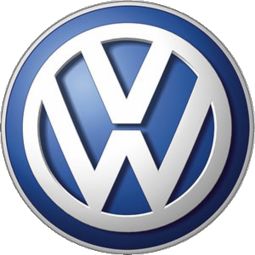
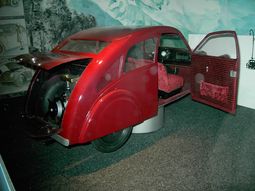
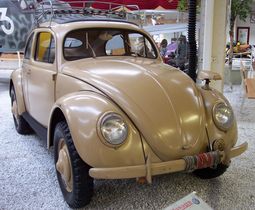
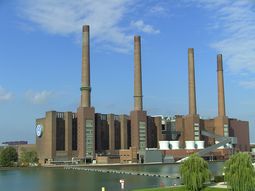
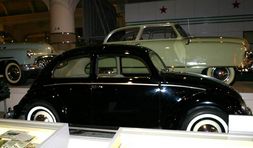
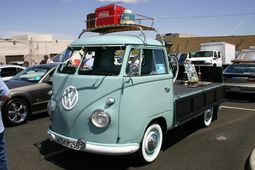
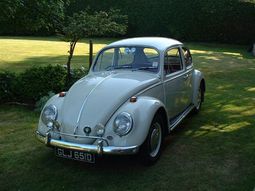
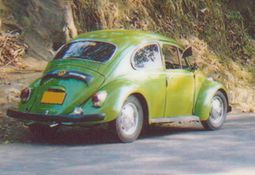
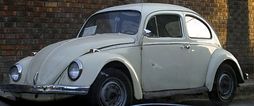
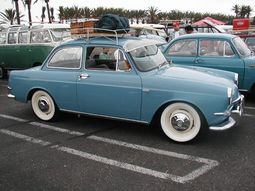
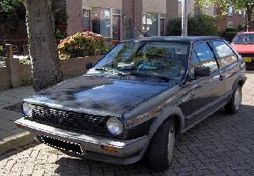
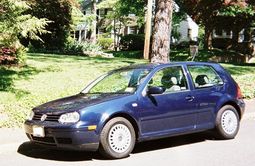
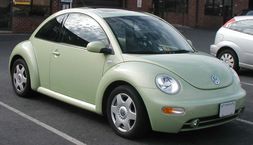
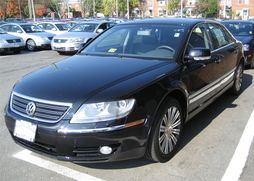
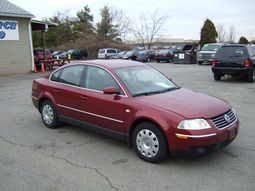
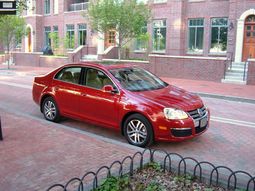
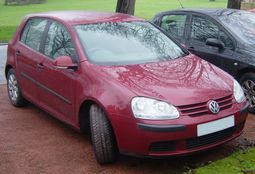
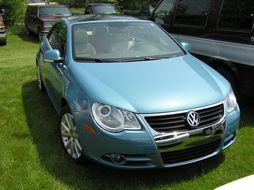
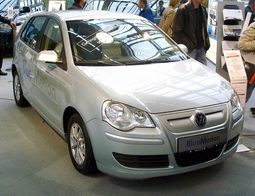
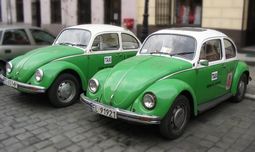
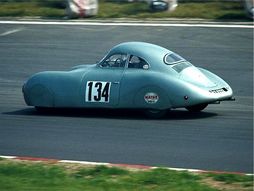
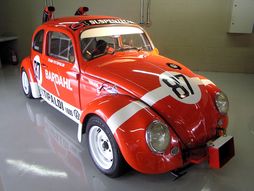
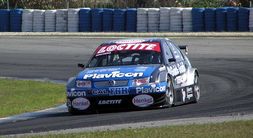
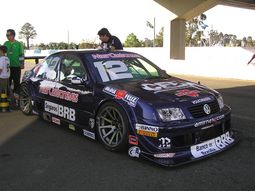
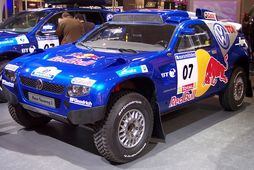
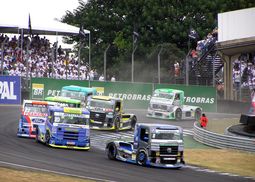
|